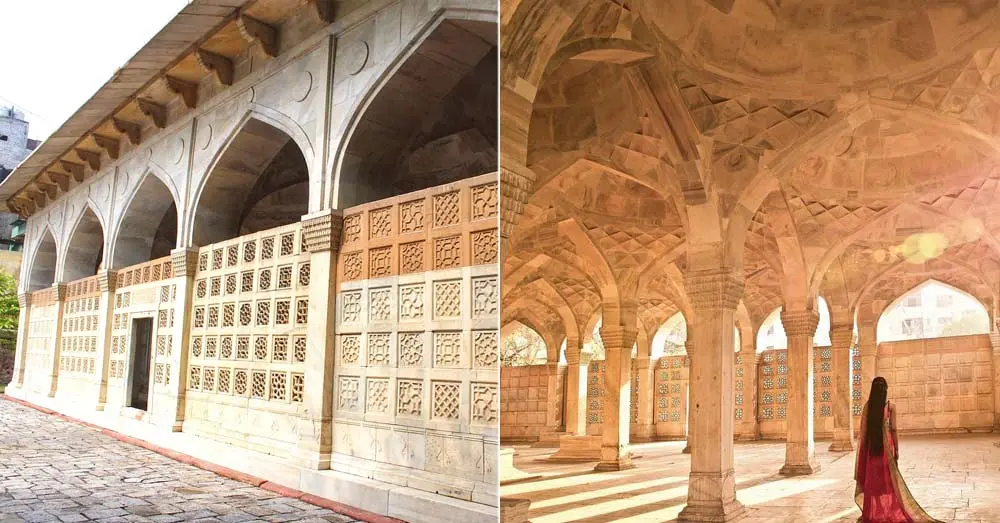Chausath Khamba

- 18 Mar 2024
Why is it in the News?
Characterized by its marble pillars and intricate latticework, Chausath Khamba (64 pillars) stands adjacent to the Nizamuddin dargah, a 14th-century shrine erected in honor of the revered Sufi saint Hazrat Nizamuddin Auliya.
About the Chausath Khamba:
- Chausath Khamba was built in AD 1623 - 24 to serve as a tomb for Mirza Aziz Koka, the foster brother of Mughal Emperor Akbar.
- It is so called on account of the 64 (chausath) monolithic marble pillars (khamba) and stands close to his father, Atgah Khan’s tomb, at the edge of the Dargah of Hazrat Nizamuddin Auliya.
- The tomb enclosure is entered through a lofty arched gateway and has a large sunken forecourt.
- The mausoleum is unique on account of it being built entirely of marble, with 25 marble domes supporting the flat roof of the structure.
- The plan for Chausath Khamba could have been inspired by the wooden garden pavilions from Persia - such as the Chihil Sutun, and in turn, the Chausath Khamba seems to have inspired the architectural design for Emperor Shahjahan’s Diwan-i-Aam, Hall of Audience.
- Each facade of the square structure has five marble arches inset with marble jaallis or lattice screens and a doorway in the central arch providing access to the tomb.
- The column capitals are intricately carved with simple yet striking pendentives bridging the square floor plan to the circular dome above.
- The structure also finds mention in Sir Gordon Risley Hearn’s book The Seven Cities of Delhi.
- As per author and historian Sam Dalrymple, the edifice embodies the architectural style of Gujarat and Ahmedabad within Delhi, serving as the Urs Mahal for hosting festivities during the commemoration of Nizamuddin's passing.
- This illustrates the historical dissemination of regional architectural influences across India over centuries.
